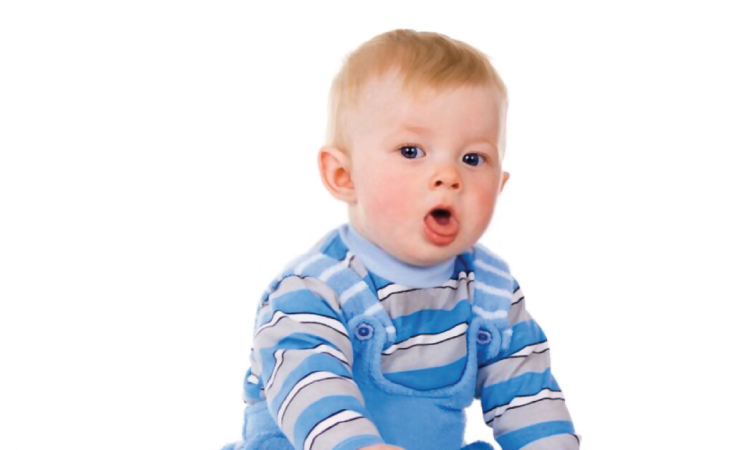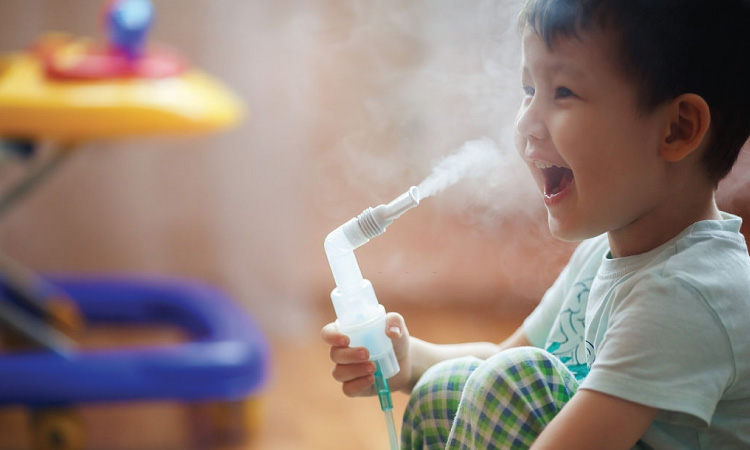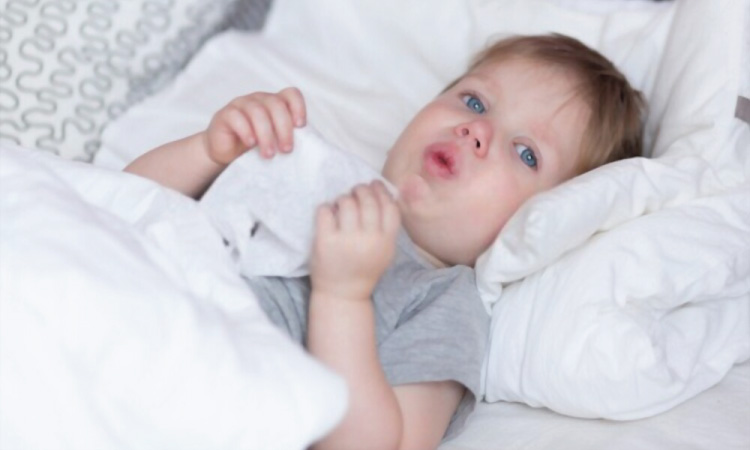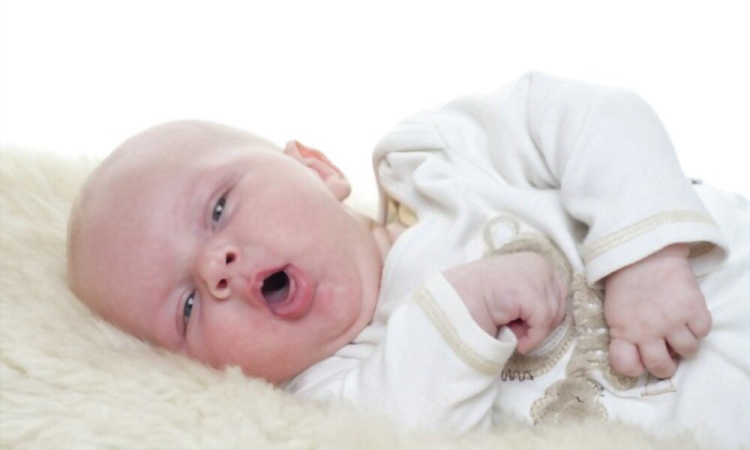An extremely contagious respiratory infection, whooping cough, causes severe inconvenience. Whooping cough can bring about severe health problems in babies, toddlers, children, teens, and even, adults. There is a huge need to know about whooping cough remedies for toddlers since whooping cough often takes a toll on both their physical and mental well-being.
The disease spreads from person to person primarily through coughing or sneezing. Toddlers who get whooping cough often get it from older children and adults who do not even realize that they have the illness. And if you are wondering why it is called so, it is because of the “whooping” sound that comes when babies cough incessantly.
What Is Whooping Cough?
Whooping cough is the result of a respiratory infection. The bacteria that cause whooping cough is Bordetella pertussis. Whooping cough is also known as pertussis. Bacteria invade the airways and cause an infection. As a result, the airways become inflamed and narrowed. Whooping cough is characterized by severe coughing and it can be treated initially with home remedies for cough in toddlers, but a visit to the pediatrician is essential when it’s a case of whooping cough . Whooping cough in babies is much more dangerous than it is in older children.
In between coughs, a toddler inhales deeply and quickly for reasons of shortness of breath. As a result of this sudden and quick intake of air, “whooping” sounds are often heard, hence the name. As a result of the coughing, the pertussis bacteria can spread into the air thereby spreading the infection.
The contagious period for pertussis is about 2 weeks after the infected person starts coughing. However, antibiotics can shorten this period. One study shows that young infants hospitalized with acute bronchiolitis often have whooping cough as part of a co-infection with respiratory viruses.
Related Reading: 9 Tips To Keep Baby Warm At Night In Winters
What Causes Whooping Cough?
Whooping cough is caused by Bordetella pertussis, a bacterium. This bacterium infects the lining of the airways. This infection primarily affects the trachea and the bronchi.
Once Bordetella pertussis reaches the lining of the airways, it attaches itself to the tiny, hair-like cilia on the upper respiratory system.
The bacteria release toxins that can damage the cilia and cause swelling in the airways. It is possible that the bacteria, which are thriving, could paralyze mucus removal components in the mucous lining. When this happens, mucus begins to accumulate. As the mucus builds up, the child tries to cough it out. Because so much mucus is being produced, eventually coughing will become more intense.
When the airways are swollen, they become narrower, which makes breathing more difficult. After a bout of coughing as the child struggles to catch its breath, it could bring about the characteristic whooping sound.
Related Reading: 15 Most Common Unhealthy Foods For Toddlers
5 Major Signs Of Whooping Cough In Toddlers

The early stages of whooping cough are similar to the common cold. This can result in runny noses and dry coughs that can last for a week or so. As a result, whooping cough in toddlers may go unnoticed until more severe symptoms appear. From a few irritating coughs, babies begin to having coughing spells that last longer.
Within 5 to 10 days of the child being exposed to whooping cough, the symptoms usually appear. At times, however, children don’t show symptoms for up to three weeks. Whooping cough symptoms can broadly be divided into initial symptoms and paroxysmal or later symptoms.
5 major signs of whooping cough in toddlers are:
1. Exacerbation of initial signs
After a week, symptoms such as a general feeling of being unwell, mild fever, blocked noses, dry and irritating coughs, sore throats, runny noses, and watery eyes start to intensify. This is one of the indications of whooping cough in toddlers, but not generally noticed or manifested as one.
2. Having recurring episodes of intense coughing
Long coughing spells often end in a high-pitched ‘whoop’ sound upon inhalation. A child with whooping cough is likely to cough violently and repeatedly until their lungs feel empty. When the lungs are empty, the child is forced to take in the air suddenly, resulting in the whooping sound.
3. Difficult to draw air into the lungs
During these coughing episodes, toddlers find it difficult to draw air into the lungs (inspiration) between coughs. During a bout of rigorous coughing, a toddler’s eyes can bulge. There may also be bulging of prominent veins in the neck. Excessive salivation may also occur.
4. Post-pertussis emesis
The name looks complicated, but it is nothing more than violent coughing followed by vomiting. Toddlers who have whooping cough expectorate (cough up) large quantities of thick mucus, which often ends with vomiting.
5. Whooping cough can cause bleeding
During whooping cough, the coughing can raise the blood pressure in the blood vessels in the eyes, nose, or both. This can bring about nosebleeds in toddlers. The appearance of red blood vessels in the white of the eyes is another consequence.
Related Reading: 9 Home Remedies For Colic In Babies
Meanwhile, children with whooping cough are prone to other infections like pneumonia. This occurs when mucus is aspirated into the lungs. The middle ear (otitis media) of the toddler is also susceptible to infection.
How To Diagnose Whooping Cough In A Toddler?
In the early stages of whooping cough, diagnosing it can be difficult since the symptoms resemble those of other common respiratory illnesses, such as a cold. However, symptoms and the cough alone can help doctors diagnose whooping cough sometimes.
An official diagnosis will be made after a thorough review of the child’s medical history. In addition to a physical exam, the doctor may also take nasal and throat mucus samples for laboratory testing.
Confirmation of the diagnosis may require medical tests. The following tests may be required:
- Taking a nose and throat culture: From the nasopharynx (the upper part of the throat located behind the nose), a sample is taken by swabbing or suction. Testing is then conducted to detect whooping cough bacteria in the sample
- Tests to determine the number of white blood cells in the blood: It is a general test and not focused specifically on whooping cough. The results indicate whether an infection exists. The child’s blood sample will be sent to the lab to determine the WBC count. The body’s white blood cells fight infections, including whooping cough. Therefore, infections or inflammation usually result in a large number of white blood cells
- A chest X-ray: In order to determine whether the child’s lungs are inflamed or filled with fluid, the doctor may order an X-ray. Children with whooping cough and other respiratory infections can develop lung problems due to pneumonia.
Managing Whooping Cough In Toddlers
Some infants and young children who need constant monitoring or respiratory support will require hospitalization during the treatment of whooping cough. Whooping cough can be treated with antibiotics at its earliest stages. During the late stages of whooping cough, antibiotics can assist in preventing the spread of the infection, rather than treating it.
Here are some tips to help treat whooping cough in toddlers and reduce the risk of spreading it to others:
- Give antibiotics according to your child’s doctor’s prescription
- Mist vaporizers can help a baby with whooping cough by loosening mucus and reducing coughing.
- It is important to wash your child’s hands frequently and properly
- As much as possible, keep your home free of irritants that may trigger coughs, such as dust, smoke, and chemical fumes
- Keep your child hydrated by providing plenty of fruits and fluids, including water, juices, and soups
- Providing your child with small meals every few hours will assist in preventing vomiting
Related Reading: Ghee For Babies- When, How, And Health Benefits
7 Remedies for Whooping Cough in Toddlers

Antibiotics are usually prescribed for whooping cough. Though antibiotics can clear up an infection, they may not alleviate the cough of your child. Many home remedies can be used to manage coughs and reduce their severity. The following are the top 7 home remedies for whooping cough in toddlers
- Make use of a humidifier
When there is moisture in the air, it can reduce the intensity and severity of coughing by loosening the mucus in the lungs. An effective way to reduce coughing in children is to install a humidifier in the bedroom. The best humidifiers for this purpose are cold-air humidifiers and cool-mist humidifiers.
Note**Remember to use distilled or clean water in the humidifier. Also, keep it running, especially when the child is sleeping and at night. This is how to stop whooping cough at night.
- Steam inhalation
In the absence of a humidifier, your bathroom can serve as a steam room. You can do this by running a hot shower in the bathroom and allowing the steam to condense. Now let the child sit in the room for ten minutes. Steam is also effective at loosening mucus, so let your child inhale steam thrice each day, particularly before going to bed. This will definitely help to get rid of whooping cough fast.
- Whooping cough and lemon juice
Lemon juice is a well-known home remedy for coughs and colds because it contains loads of vitamin C and antioxidants. Consuming lemon juice kills microbes in the lungs, throat, and airways.
Give your child a teaspoon of lemon juice mixed with warm water twice a day to help manage the symptoms of whooping cough. Adding honey doubles the effectiveness. Also honey with lemon is very effective in combating nocturnal cough1.
Related Reading: When And How To Use Hing For Babies?
- Using turmeric to treat whooping cough
A yellow pigment in turmeric called curcumin gives it antiviral, antibacterial, and anti-inflammatory properties2. Turmeric is thus considered to be an effective home remedy for whooping cough.
Early in the morning, give the child turmeric water. Turmeric may reduce inflammation and other symptoms of coughing. It is equally beneficial to give your child Haldi milk or golden milk twice daily.
Related Reading: Cow Milk For Babies – Benefits, Risks, and Precautions
- Saltwater gargle
Toddlers suffering from whooping cough may benefit from gargling with saltwater. It is beneficial to gargle with warm water to soothe a sore throat. However, adding salt to the water has additional benefits.
In addition to reducing inflammation and swelling, saltwater also removes microbes from the throat. Saltwater also helps clear the airways. When your child suffers from a cough, including whooping cough, make them gargle with salt water three to four times a day.
- Honey for whooping cough
A baby younger than 12 months old should never be given honey. Honey can cause botulism, a rare but life-threatening condition in young babies. As your baby gets older, the benefits of honey outweigh the risks.
Aside from having antioxidant properties, honey also aids in reducing inflammation and has antibacterial properties. You can make your own cough syrup by mixing a little grated ginger with honey. This can be a more effective natural remedy than most over-the-counter cough syrups3.
- Licorice benefits whooping cough
It has been found that licorice (Mulethi) can potentially dilate or widen the airway since it is a natural expectorant and bronchodilator. Licorice is also effective against whooping cough. Powder or extracts of licorice root are effective in clearing out the lungs and making breathing easier.
Add one teaspoon of licorice root powder to a glass of warm water. If necessary, mix in honey. To relieve the symptoms of the infection, the child should drink this twice a day.
Related Reading: 15 Common Foods That Can Be Unsafe For Babies
Conclusion
Consult your family doctor or pediatrician if you or your child appear to have whooping cough. Never hesitate to take a child to an urgent care center or the emergency department of a hospital if symptoms are severe.


